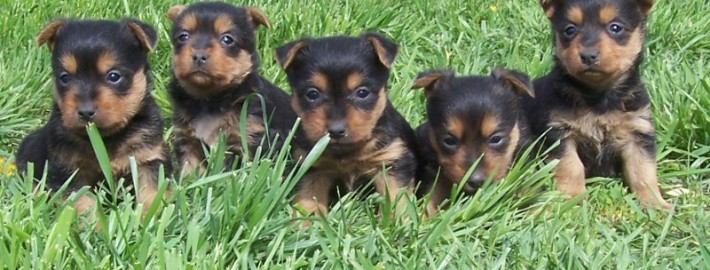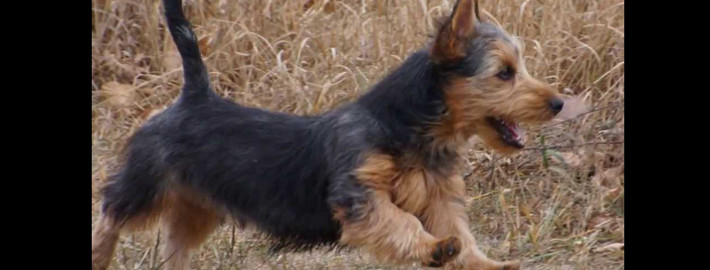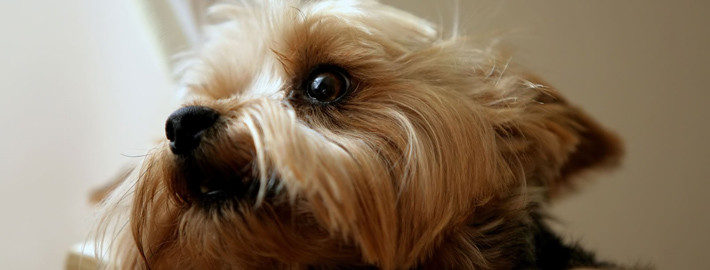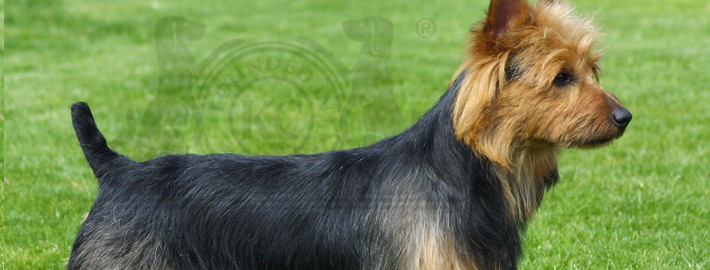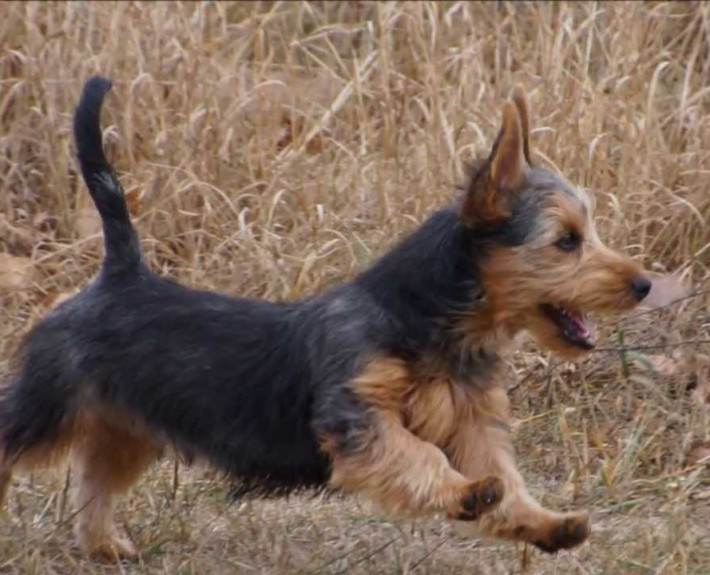What makes the Australian Terrier Unique?
A feisty, small breed of dog that is well known for its tenacious spirit, the Australian Terrier is well suited for both rural and city life. This hypoallergenic dog makes a wonderful companion for many different types of owners.
Page Contents
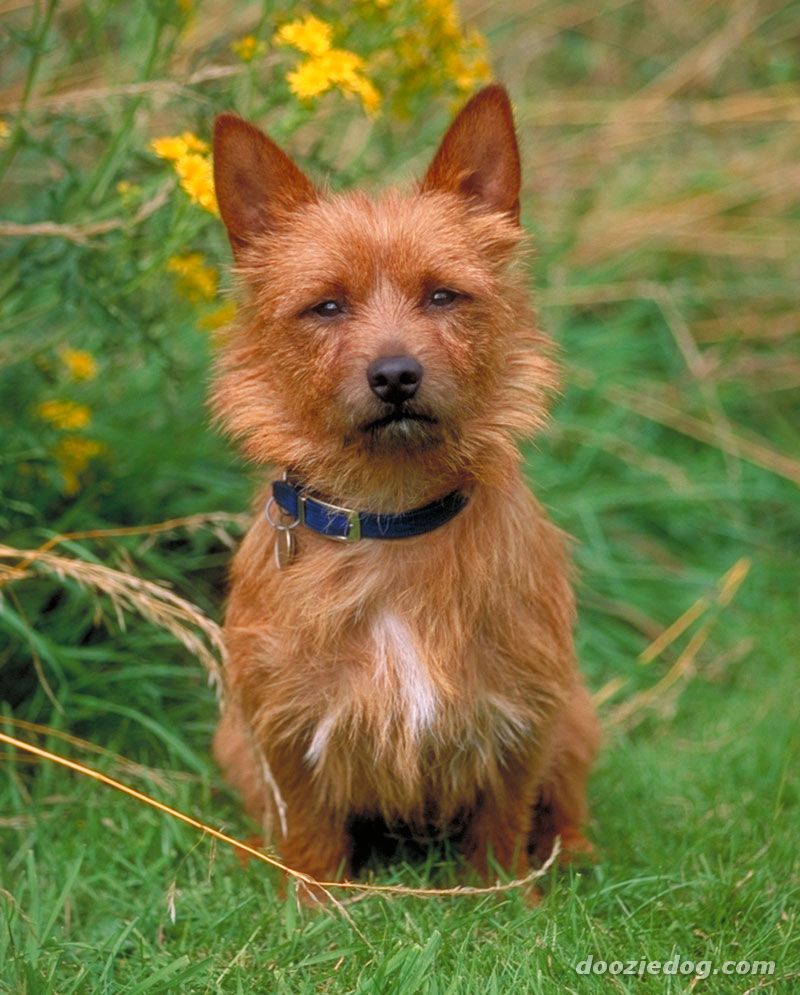
SnapShot
| Size: | Males – 23 to 28 cm (9 to 11 inches) Females – 23 to 28 cm (9 to 11 inches) |
| Weight: | Males – 6.4 to 7.3 kg (14.1 to 16.1 pounds) Females – 5.4 to 6.4 kg (11.9 to 14.1 pounds) |
| Origin: | Australia |
| Life Span: | 12 – 15 Years |
| Colour: | Sand, Blue & Tan, Red |
| Litter Size: | 2 to 6 puppies, 4 being the most common |
Is the Australian Terrier Right For You?
Quieter terriers, the Aussie is nonetheless a plucky, tough character, ready to go after a rodent when the chance arises. It is fun-loving and adventurous, and needs daily exercise to keep it from becoming frustrated. It is clever and generally eager to please, making it one of the more obedient terriers. It gets along fairly well with other dogs and household pets. It is reserved with strangers. Reflecting its earth dog heritage, it does like to dig. the breed was probably created by crossing many terrier breeds including the Irish, Cairn Terrier, Norwich Terrier, Dandie Dinmont Terrier, Yorkshire Terrier, and the Skye Terriers. He was used for rodent and snake control, as a watchdog, and even as a shepherd and as a companion. The Australian Terrier was the first breed to be recognized as native to Australia in 1868. It was first recognized by the AKC in 1960. Some of the Australian Terrier’s talents are watchdog, tracking, agility and performing tricks.
In 5 Words
- Spirited
- Even Tempered
- Alert
- Loyal
- Companionable
Characteristics
Learn About the Australian Terrier
Description
General Description
Among the smallest in the Terrier Group, the Australian Terrier is nonetheless a sturdy breed. These dogs are somewhat longer than they are tall, with a medium sized bone structure and short legs. Feet on this breed are small and catlike. They also have arched toes, which are compact and well-padded. Their toes should neither turn outward nor inwards. Australian Terriers typically have their dewclaws removed as puppies.
This breed has a ruff around their necks and a topknot of longer hair. These dogs have v-shaped ears, a long head, and a black nose that is prefaced by a v-shaped indentation. Australian Terriers have dark brown eyes with a keen and intelligent expression. They should have good sized teeth which meet in a scissors bite. Their chests should be deep and well set under their bodies.
Size
These dogs weigh between 9 and 14 pounds (4 to 6 kilograms). Both males and females of the breed should measure between 9 and 11 inches (23 and 25 centimeters) at their shoulder blades.
Coat
The Australian Terrier has a weatherproof double coat. The coarse top layer measures about 2.5 inches long. However, the top coat is shorter on the lower legs and tail that it is on the dogs’ bodies. The undercoat on Australian Terriers is short and soft. Coat colors for this breed are blue and tan, sandy, and red. The blue coloration on these dogs is varied and includes dark blue, steel blue, silvery blue and dark bluish grey types. Terriers with silver and blue coloration would alternate these colors per strand and the tips of each hair would be darker than the main color. All Australian Terrier have a topknot covering only the top of their skulls. This hair has a finer and softer texture than the rest of their coats.
Short History of the Australian Terrier
Descended from various breeds brought from England to Australia in the early 19th century, the Australian Terrier counts among its ancestors the Cairn Terrier, the Short Haired Skye Terrier, the Dandie Dinmont Terrier, the Yorkshire Terrier, and the Irish Terrier. This breed was created in order to eradicate various pests such as snakes, mice, and rats. Australian Terriers have also been used as watchdogs, shepherds, and companions throughout their lengthy history.
This breed began to develop in Australia around 1820 and the dogs were initially known as Rough Coated Terriers. They were officially recognized in 1850. Australian Terriers were the first breed to be recognized as native to their namesake country in 1868 .By the 1890s, the breed had acquired their current name.
The Australian Terrier was shown at a dog show for the first time in 1906 in Melbourne and soon made their way to England where they were also present in the show ring. The Kennel Club of the United Kingdom eventually recognized the breed in 1933. The American Kennel Club acknowledged the Australian Terrier in 1960, and the United Kennel Club gave the breed official status in 1970.
Temperament
Australian Terriers are alert and inquisitive, yet they are generally considered to be among the quieter terrier breeds. These clever and adventurous dogs are one of the more obedient terrier types and are much easier to train than others of a similar breed. These terriers were additionally created to withstand harsh Australian conditions and are physically able to stay outdoors in temperate to warm climates. Their tenacious personality which helps make them avid hunters of squirrels and other rodents. In keeping with their earthdog heritage, Australian Terriers do enjoy digging holes in the yard and are probably not the best pet choice for avid gardeners.
However, Australian Terriers do bond very closely with their human families. While these dogs are generally good natured, they can become prone to unnecessary barking. This breed makes good watchdogs and, therefore, they may appeal to people living alone. Australian Terriers tend to be reserved with strangers. This breed is also well known for their failure to get along with other dogs, especially those of the same gender, and may boss around other pets. Terriers in general are highly incompatible with cats, as these dogs tend to regard smaller animals as prey.
Caring for Your Australian Terrier
General Health
There have been a number of breed health studies done throughout the years. As it currently stands, there are no major health concerns for Australian Terriers though Legg-Perthes, patellar luxation, and diabetes have been known to occur from time to time. This breed lives between 11 to 12 years on average, though older dogs are not uncommon.
Care
Daily
This is an active breed that needs daily exercise. Australian Terriers will do well with moderate length walks or briskly paced playtime with their human owners. They also will benefit from enclosed areas where they can safely run about without having to be on their leashes.
Weekly
This breed requires weekly brushing with a soft slicker brush. Pet owners should also wipe the dog’s ears out using a cotton ball and gentle ear cleaner in order to prevent problems from arising at least once a week. In addition, owners should regularly check their dog’s ears for any signs indicative of an infection, such as redness or soreness. If that proves the case, they should contact their veterinarian.
Monthly
As with any breed, the Australian Terrier should be given heartworm, flea, and tick prevention medication every month.
Grooming & Bathing
These dogs do not have complicated grooming requirements. Every three months or so Australian Terrier should be bathed using a mild shampoo. Regular brushing of this breed’s teeth not only keeps their breath fresh but also facilitates healthy gums and teeth. It is best to begin grooming these dogs when they are young so that they will tolerate it when they become older.
Exercise & Training
Australian Terriers are generally easy to train. These dogs excel at watchdog, tracking, and agility tasks. They are also quite good at performing tricks as well. Due to their hunting instincts, this breed enjoys being outdoors in an enclosed area where they can chase after birds, squirrels, and other small creatures. These terriers also enjoy long walks and playing games with their human family.

